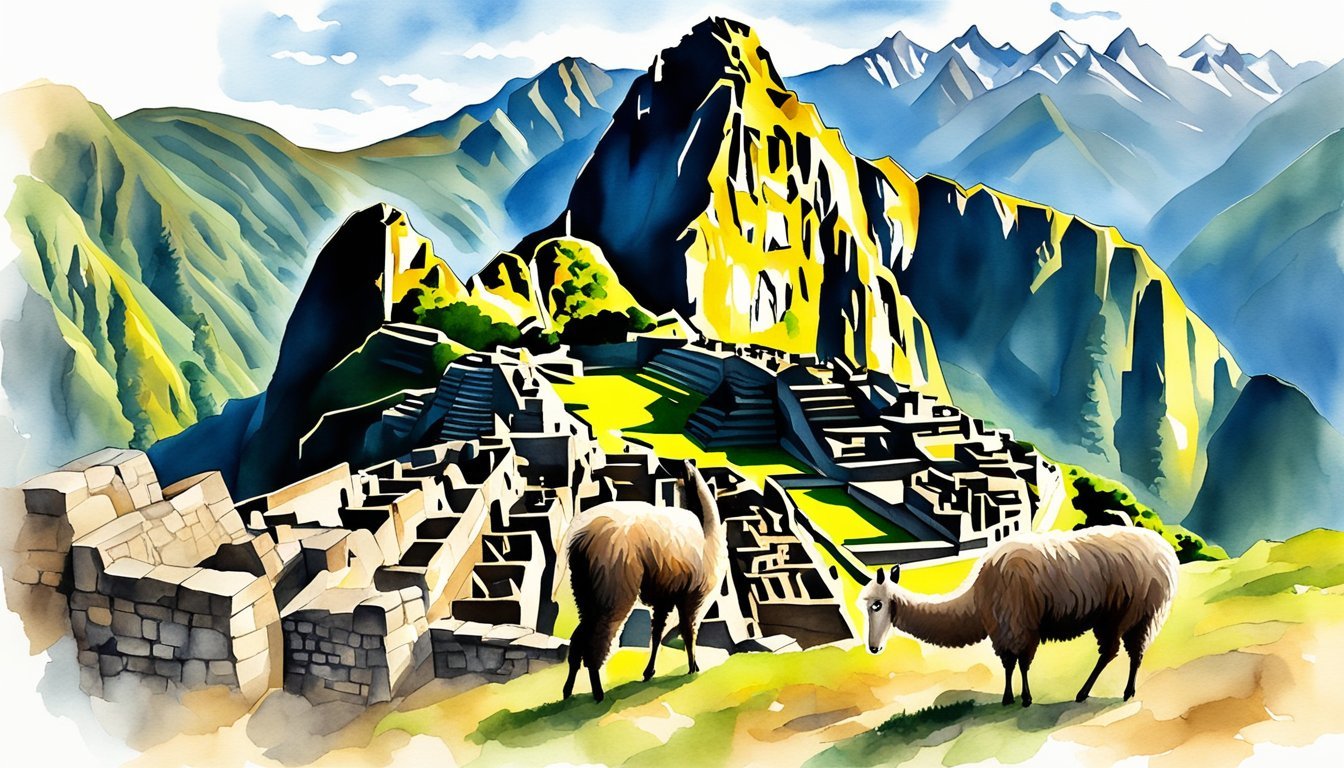Geography and Demographics
Peru‘s varied geography divides into three distinct regions: the Andean highlands, the Pacific coast, and the Amazon Basin. Each area is characterized by unique landscapes, climates, and demographic distributions.
Andean Highlands
The Andean Highlands, dominated by the Andes mountains, are home to Cuzco, the historic capital of the Inca Empire, and Arequipa, known for its colonial architecture and vibrant cultural scene. In this region lies Huascarán, the highest peak in Peru, forming part of the Cordillera Blanca mountain range. The area showcases significant biodiversity, with ecosystems ranging from glacial mountains to high-altitude grasslands.
Pacific Coast
The Pacific Coast is characterized by arid plains and features Peru’s capital, Lima. With a significant proportion of the population, the coast is central to the nation’s economic activities, trade, and urban life. Despite the desert conditions, this region includes fertile valleys that support agriculture due to river systems descending from the Andes.
Amazon Basin
Encompassing nearly 60% of the country, the Amazon Basin is a vast jungle area that teems with life. This region is largely sparsely populated, yet it’s the source of Peru’s incredible ecological and cultural diversity. The Amazon River begins here, and the basin is peppered with numerous indigenous communities that maintain traditional lifestyles, deeply connected to the forest. Lake Titicaca, the world’s highest navigable lake that Peru shares with Bolivia, is also found in this region.
History and Culture

Peru’s history is marked by the rise and fall of pre-Columbian civilizations, Spanish conquest, and subsequent development into a culturally rich republic. Its culture is a vibrant tapestry woven from indigenous, Spanish, African, and Asian influences, with notable contributions in art, music, and literature.
Pre-Columbian Civilizations
The territory of modern-day Peru has been inhabited for thousands of years. One of the earliest known civilizations is the Norte Chico civilization, identified with the UNESCO World Heritage Site of Caral, which dates back to 5000 BCE. Later on, the region saw the emergence of the Chimú culture, renowned for their architectural achievements like the city of Chan Chan. However, the most dominant pre-Columbian culture was the Inca Empire, centralized in Cuzco. The Incas were known for their remarkable administrative system, engineering skills, evident in landmarks such as Machu Picchu, and a complex road system spanning various climates and terrains.
Colonial Period
With the arrival of Spanish Conquistadors, led by Francisco Pizarro in the 16th century, the Inca Empire was conquered, leading to the establishment of the Viceroyalty of Peru (Virreinato de Perú). This period witnessed significant social and cultural changes as the Spanish integrated their customs, religion, and language. The city of Ayacucho became a focal point for religious art, embodying the mestizo (mixed European and indigenous) heritage that characterizes much of Peru’s culture today. The imposed Roman Catholic faith mingled with indigenous beliefs, still visible in contemporary religious practices across the nation.
Modern Developments
The fight for independence in the early 19th century was a significant turning point, culminating in Peru’s liberation from Spanish rule and the establishment of the Republic of Peru. Throughout the following centuries, Peru experienced various internal conflicts, including a Civil War and the more recent internal conflict with the Shining Path. However, Peru has also engaged in external disputes, such as the War of the Pacific. These historical events have not only shaped the nation’s geopolitical boundaries but also its national identity, as reflected in expressions like the National Anthem of Peru.
Cultural Expressions
The cultural expressions of Peru are as diverse as its people. They draw upon the deep heritage of the Aymara, Quechua, and Incas, as well as Spanish influences. Peruvian music contains both traditional folk genres and contemporary styles. In art, Peru’s native traditions are still alive, integrated and evolving with European techniques. When it comes to economic activities, Peru is rich in mining, fishing, agriculture, and manufacturing, which have all influenced the cultural landscape. The country celebrates its diversity and honors the past, looking forward to a future that respects both its ancient heritage and the dynamism of its mestizo, white, Protestant, and various other cultural groups.

